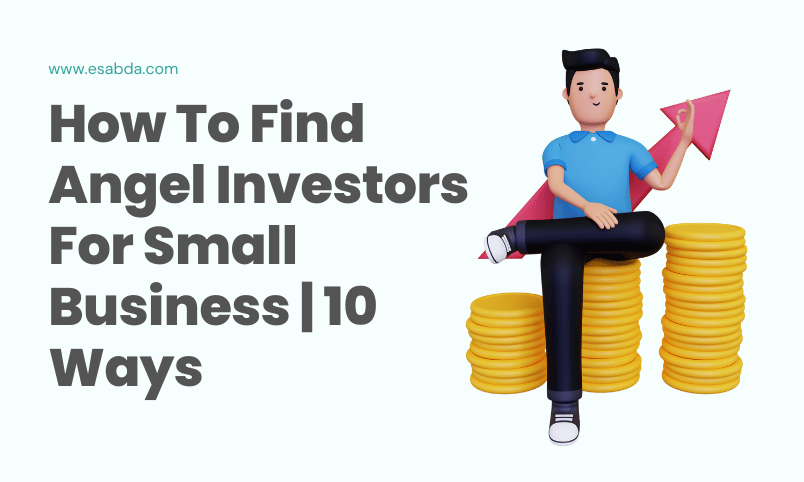By Esabda
In the dynamic world of digital marketing, micro-influencers have emerged as a powerful tool for brands to connect with their target audience authentically. These individuals might not have millions of followers like mega-celebrities, but their engaged and niche audiences make them invaluable allies for businesses seeking to boost their online presence. Finding the right micro-influencers for your brand requires a strategic approach that combines careful research and creative thinking. In this article, we’ll explore ten effective ways to find the right micro-influencers to promote your brand.
Understanding Micro-Influencers: Who Are They?
Micro-influencers are individuals who have a dedicated following ranging from 1,000 to 100,000 followers on social media platforms. They are known for their expertise in specific niches and their ability to engage their audience through relatable and genuine content. Collaborating with micro-influencers can lead to higher engagement rates and better audience targeting. There are many benefits of micro-influencers collaboration that your brand can get.
10 Ways to Find The Right Micro-Influencers for Your Brand
Here are 10 effective ways to discover the perfect micro-influencers to promote your brand.
1. Defining Your Influencer Criteria
Before embarking on your search, it’s essential to define the criteria you’re looking for in micro-influencers. Consider factors like niche relevance, engagement rates, geographic location, and value alignment. A well-defined criteria list will streamline your search and help you find influencers that resonate with your brand’s identity.
Moreover, by setting specific guidelines, you can ensure that the influencers you collaborate with not only align with your brand’s goals but also possess the potential to authentically connect with your target audience, resulting in more meaningful and effective partnerships.
2. Leveraging Social Media Platforms
Start your search by exploring popular social media platforms like Instagram, TikTok, YouTube, and Twitter. Use relevant keywords and industry-related hashtags to delve into conversations and content that resonate with your brand’s niche.
This approach will allow you to discover influencers who are actively discussing topics relevant to your industry. Once you identify potential influencers, take the time to analyze their content quality, engagement levels (such as likes, comments, and shares), and audience demographics.
This careful assessment will help you create a shortlist of influencers whose content and audience align well with your brand’s objectives, increasing the likelihood of successful collaborations.
3. Exploring Niche Bloggers and Content Creators
Niche bloggers and content creators play a vital role in cultivating a dedicated and engaged audience that shares a common interest. To tap into this valuable resource, begin by identifying bloggers and creators who operate within your industry’s sphere.
Evaluate their reach and engagement metrics to gauge the level of interaction their content generates. These individuals’ authentic and specialized content resonates deeply with their audience, establishing a sense of trust and rapport.
Collaborating with such influencers can offer your brand a unique opportunity to establish a personal and relatable connection with your target audience, resulting in more meaningful and impactful engagements.
4. Utilizing Influencer Marketing Tools
Another effective way to find the right micro-influencers to promote your brand is by utilizing various influencer marketing tools. Several influencer marketing tools are available that can simplify your search:
- AspireIQ: This platform offers features to help you identify influencers based on specific criteria and manage collaborations effectively.
- Upfluence: Upfluence provides tools for finding influencers, tracking their performance, and managing campaigns seamlessly.
- Traackr: Traackr enables you to discover influencers aligned with your brand, analyze their impact, and foster authentic relationships.
These tools are designed to streamline the discovery process by allowing you to filter potential influencers based on various factors. Additionally, they offer valuable insights that can guide your decision-making when selecting the most suitable micro-influencers for your brand’s campaigns.
5. Engaging in Hashtag Research

Hashtags are a powerful tool for uncovering potential micro-influencers on various social media platforms. Conduct thorough hashtag research that revolves around topics central to your industry. Look for posts that exhibit substantial engagement, such as likes, comments, and shares.
For instance, if you’re in the fitness industry, search for hashtags like #FitnessJourney or #HealthyLifestyle. Identifying posts with high engagement in these hashtag feeds can provide insights into influencers who are actively participating in conversations pertinent to your brand, making them excellent candidates for collaboration.
6. Participating in Industry Events and Webinars
Industry events and webinars serve as valuable hubs for networking and knowledge-sharing among professionals and enthusiasts who are deeply invested in a particular field. Attending these events not only enriches your understanding but also offers an opportunity to discover potential micro-influencers.
Engaging in conversations and actively participating in discussions during these gatherings can help you identify individuals who resonate with your brand’s values and have a genuine interest in the industry, making them potential collaborators who can bring authenticity and credibility to your campaigns.
7. Collaborating with Your Audience
Your existing audience holds a wealth of untapped potential when it comes to identifying micro-influencers. Prompt your followers to suggest individuals they respect and follow within your industry. This interactive approach not only strengthens community engagement but also unearths lesser-known influencers who may have a dedicated following.
For example, if you run a cooking blog, asking your audience to recommend their favorite food bloggers could reveal talented culinary enthusiasts with a small but engaged audience, presenting an opportunity for fruitful collaborations.
8. Scouting for Up-and-Coming Talent
Keep an eye out for up-and-coming talent in your industry; while they might not boast substantial followings at present, their potential for growth is significant. Establishing connections with these emerging influencers early on can result in enduring partnerships that evolve as their influence expands over time. To effectively identify and collaborate with such influencers, consider these tips:
- Monitor Trends: Watch for innovative content creators as they often become influential figures in the future.
- Track Hashtags: Follow industry hashtags to discover new voices gaining traction.
- Build Rapport: Engage with their content genuinely before proposing collaboration.
- Support Growth: Collaborating with them helps both parties grow within the industry.
For example, in fashion, a budding designer sharing unique creations might become a major influencer. Partnering with them at an early stage can benefit both your brand and their growing influence. It is another great way to find the right micro-influencers for your brand and business.
9. Establishing Authentic Relationships
When you’ve pinpointed potential micro-influencers, shift your focus to establishing genuine connections with them. Initiate contact with personalized messages that express your appreciation for their content and articulate your enthusiasm for a collaborative venture. By conveying a sincere interest in their work, you lay the foundation for a strong partnership built on mutual respect and shared values.
Over time, nurturing this authentic rapport can yield partnerships that go beyond mere promotion, resulting in meaningful collaborations that resonate deeply with both the influencer and your brand’s audience.
10. Monitoring Online Communities and Forums
Online communities and forums related to your industry are treasure troves of potential micro-influencers. These platforms attract individuals who are passionate about specific topics, making them ideal places to identify authentic voices.
Look for active contributors who share valuable insights and engage with others. Their influence within these communities can extend to their social media presence, making them potential candidates for collaboration. By connecting with influencers who are already respected within their niche, you can tap into a dedicated and engaged audience that aligns with your brand.
This approach not only ensures a relevant target audience but also strengthens your brand’s authenticity by associating with influencers who hold credibility within their respective communities.
Conclusion
Incorporating micro-influencers into your brand’s marketing strategy can yield impressive results when you’re looking to find right micro-influencers, in terms of engagement, credibility, and reach. By following these ten strategies for discovering the right micro-influencers, you’ll be well-equipped to create impactful collaborations that resonate with your target audience and enhance your brand’s online presence.
This approach not only amplifies your brand’s visibility but also fosters a sense of community as influencers authentically connect with your audience, forging bonds that extend beyond a single campaign.
FAQs (Frequently Asked Questions)
Providing some guidelines can ensure that the content aligns with your brand’s messaging, but also allows influencers to maintain their authentic voice.
The frequency depends on your campaign goals, but maintaining consistent collaborations can help in building a stronger brand-influencer relationship.
Success can be measured through metrics like engagement rates, website traffic increase, and sales attributed to the campaign.




